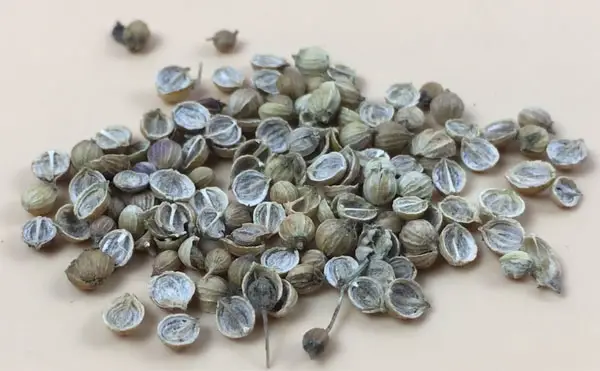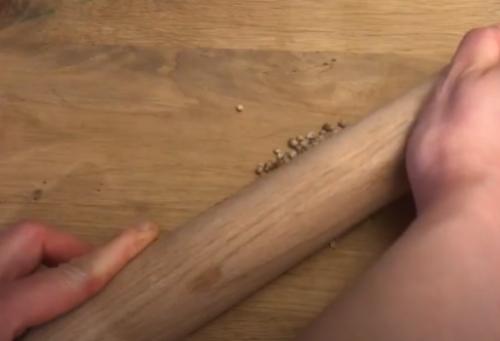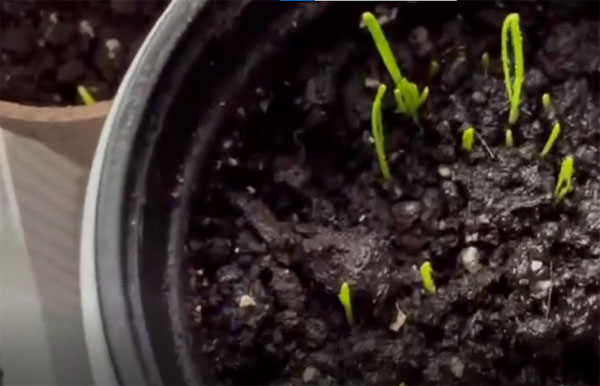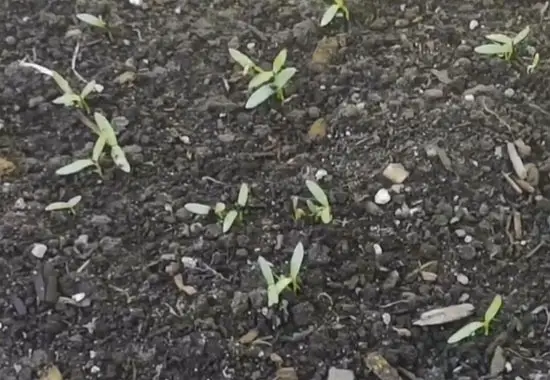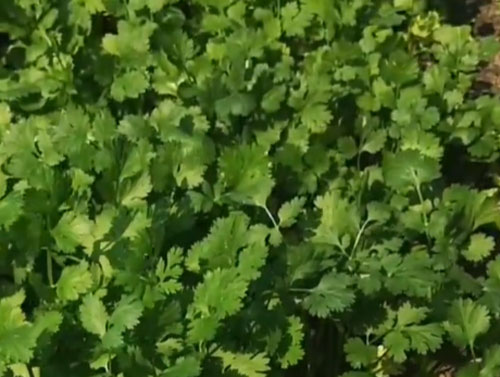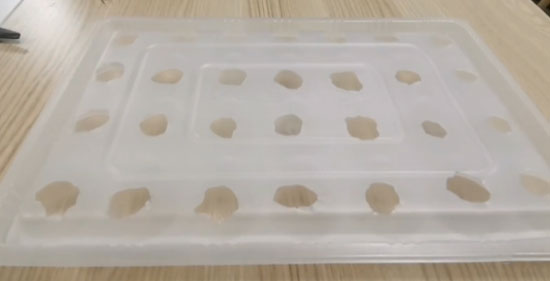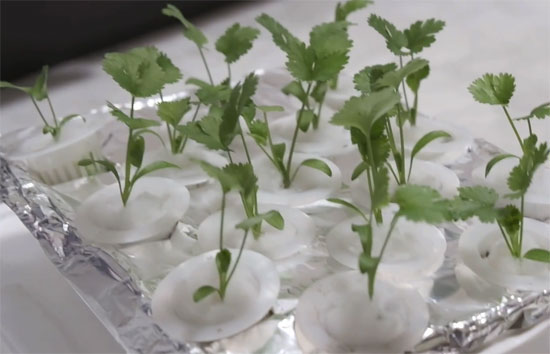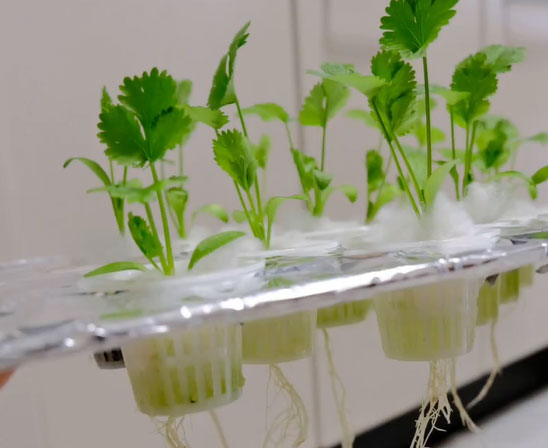Cilantro, normally known as coriander, is an herb widely used in Asian cooking. The mild, lemony flavor enhances the taste of lentils, vegetables, and some fish dishes.
In Ayurvedic medicine, people grow cilantro for the seeds because they are valued as a carminative and stimulant and lower blood cholesterol levels if taken regularly. Because of its culinary and medicinal uses, cilantro is a wonderful herb to have in the kitchen, and with some knowledge and care, you can even grow cilantro at home.
Grow With All The Necessary Conditions In Place
Given the right soil, temperature, air, and adequate water, it is relatively easy to grow cilantro. However, it would help if you kept in mind that this herb is sensitive to extreme heat and cold and will seed too early in unfavorable conditions.
Soil Requirements
It is commonly believed that cilantro needs to be grown in soil with a pH of 6.0-6.8; however, research has proven the plant can tolerate more alkaline soils and even thrive when grown in soils up to 8.5pH. Soil should have good drainage, as wet soil will cause too much moisture for optimal growth and increase the chances of disease or root rot.
A mix of equal parts compost, garden soil, and sand works well for growing cilantro at home. Before planting, it is best to loosen the top inch or two of soil and incorporate some organic matter such as manure or peat moss which helps with water retention and adds essential nutrients like nitrogen, phosphorus, potassium, and magnesium.
Sunlight And Temperature Conditions
Having the right soil is important for growing cilantro, but having the ideal sunlight and temperature conditions can be equally as crucial. Cilantro thrives best in full sun with six to eight hours of direct light daily. When it comes to temperatures, cilantro does not like extreme heat or cold – it prefers neutral weather between 65-75 degrees Fahrenheit (18-24°C).
In hotter climates, partial shade may be needed during the peak of summer when temperatures exceed 85 degrees Fahrenheit (29°C). It’s also important to monitor humidity levels since too much moisture can lead to fungal disease while dry air will cause leaves to become brittle.
When planting in containers indoors or on a balcony or patio, make sure they are placed where they receive ample amounts of natural light. If supplemental lighting is required use fluorescent bulbs that cast broad-spectrum illumination. As the days start becoming longer and warmer, gradually move your container plants outdoors so they become acclimatized before transplanting into an outdoor garden plot.
Watering Schedule
Have you ever wondered how often and when to water cilantro? Watering is an essential part of growing tasty, aromatic cilantro. With the right watering schedule, your cilantro plants can thrive and provide you with a plentiful harvest.
When first planting in either pots or ground soil, it is important to give them enough water for establishment. A good rule of thumb is to keep the soil evenly moist until the seedlings have grown their first set of true leaves. Once established, your cilantro will need 1”-1 ½” inches of water per week depending on the weather conditions; during hot and dry weather apply more water than usual.
If there has been plenty of rainfall throughout the season, then less additional watering may be needed. It is also beneficial to mulch around the base of each plant which helps retain moisture in between rain showers or irrigation cycles.
Cilantro does not like having wet feet so avoid over-watering as this can lead to root rot and other fungal diseases that could kill your crop. Test out different types of automatic drip systems or sprinklers if you are unable to commit time every day for hand-watering; these systems usually require less maintenance while still providing adequate hydration levels for your cilantro plants.
Fertilizer Usage
Fertilizer is a key component to growing cilantro at home. It is important to use the right fertilizer in the appropriate amount, as this will ensure proper growth of the plant. A balanced 10-10-10 or 20-20-20 NPK (N – Nitrogen; P – Phosphorus; K – Potassium) fertilizer should be used for optimal results. During the first month, it is recommended that you fertilize every two weeks with one tablespoon per gallon of water. After that, reduce the frequency to once a month until harvest time.
It’s best not to apply liquid fertilizer directly onto foliage as it can burn leaves and affect flavor. Instead, concentrate application around the base of each plant so soil absorbs more nutrients from the fertilizer. Additionally, when using granular fertilizer, rake lightly into topsoil before watering plants thoroughly after applying the product.
If using slow-release products such as organic compost or manure tea, mix them into the soil prior to planting your cilantro seeds or transplants. This provides essential nutrients over an extended period of time without damaging tender new roots due to excessive salt content found in some synthetic fertilizers.
Grow Cilantro From Seeds
To grow cilantro exclusively for seeds, you need to position the plant in full sun. The excessive heat will prove stressful for the plant, making it flower earlier than normal, and accelerating seed production. A point to remember is that big, healthy plants produce better seeds in greater quantities. So if you are not in a hurry to harvest the seeds, you might want to let your plants grow tall and strong first.
Best Time To Grow The Plant
In temperate zones, it is best to grow cilantro in summer, while winter is the best growing season in tropical areas. Cilantro self-seeds in the tropics and wherever the winters are relatively mild; elsewhere, the seeds should be harvested and sown the following year again.
This aromatic annual herb can grow up to two feet tall in favorable conditions. It does best in well-drained, moist, rich soil, but you can grow cilantro inadequately nourished soil, adding some liquid fertilizer when needed.
Cilantro needs to be sown in the ground or deep containers because the plant develops a long taproot. Sow the seeds at one cm deep, then cover them with compost and water the soil regularly but do not make it soggy, and you’ll notice that the seed will germinate within three weeks.
Grow Cilantro From Leaf
When you grow cilantro for leaf, place the seeds at a distance of about five cm from each other. However, if you are growing cilantro for seed, you need to keep more space between plants. It’s best to plant cilantro in rows because that makes harvesting much easier.
When the seedlings are about five cm high, thin them to space them 20 cm apart from each other to grow into strong plants, in warm climates, it is easy to grow cilantro to the seed production stage in just 30 to 40 days, whereas, in cooler environments, it takes a few months to develop.
If you grow cilantro for seed, not only do you need more space, but you will also need more plants. That’s why it is better to plant cilantro on the ground in your garden rather than in containers indoors. However, if you use containers, make sure the soil drains well, thus enabling air to circulate. Lining the base with gravel or bits of pottery improves drainage.
To obtain cilantro seeds, you need to harvest the flower heads when they are dry. When that happens, just cut the stalks, bunch them together and place the flower heads down with stems sticking out in a large, thick paper bag, which you need to tie securely and hang up in a shady spot. Once dry, they are ready to be stored in an airtight container in a cool and dark place.
Read also: Why You Should Start Growing Bay Trees in Your Herb Garden
The Process For Planting Cilantro At Home
If you want to plant the cilantro, you can buy the cilantro seeds from the nearby gardening shop, where it comes in a packet with clear instructions at the back.
You can separate the seeds into two halves. One-half of the seeds you can leave in whole, and the other half of the seeds you may just split the seeds up because they tend to grow together without splitting the seeds.
To split the seeds, you can place all the seeds on a table and use a rod to roll over them. Splitting the seed makes them easy to absorb water, which will help them germinate more easily.
It would be best if you chose a pot or container that has holes at the bottom. This allows the water to drain out when you are watering them.
Once you get your pot ready, you can start to put the compost inside the pot.
You can plant the split seeds and the whole seeds together. Before you plant them, you need to make sure that you spread them properly to have enough space to grow. Don’t let them all squished together, which may make them too crowded and not be able to grow.
You may push the seeds a little bit deep into the soil so that the roots can start growing. After you finish planting the seeds, you can water the compost. You can then dip them with a plastic lid. If you don’t have a lid, you can also use foil to cover the pot. You need to cover it for 1 week.
You can cover the pot with a lid because this will give a glasshouse effect for the seed that will keep them nice and warm inside.
That’s why you can grow cilantro seeds inside your house in any weather. You have to put the pot close to your windowsill. You can put a plate underneath the pot so that the water doesn’t drain when you water the plants and go down to your windowsill.
After one week, you will see the split cilantro seeds will start growing. You will also notice some white stuff on the seeds. These are the roots that have grown up.
After two weeks, the leave starts to grow.
After five-week, you will see some of the leaves turning into cilantro leaves. And around six-week, you can start to harvest them and use them for your cooking.
How To Grow Cilantro in Water?
You can also grow cilantro in water without the need for any soil.
If you want to do so, first, you need to prepare a PVC container with a lid. You can dig several holes for the lid, as shown in the picture.
Then, prepare several cilantro seedlings and place them into the holes as shown in the below picture.
Fill the container with water and place the lid on the container.
You can then place them on the balcony or places close to the window to get some sun. If everything goes well, you can expect to harvest your cilantro in 30 to 45 days.
It’s not only easy to grow cilantro in your home once you know how to do so. It’s also worthwhile considering the herb’s culinary and medicinal uses.
Harvesting Guidelines
Harvesting cilantro is an important part of home gardening. It can be harvested in several different ways. The first method is to harvest the entire plant at once by cutting it just below the soil line with a pair of scissors or secateurs. This should be done when most of the leaves have developed and are still green. Alternatively, individual leaves or stems can be snipped off as required for cooking or other uses. To extend the growing season, regular harvesting of outer leaves will encourage new growth from the center of the plant.
It is best to cut cilantro early in the morning before temperatures get too hot and dry out the foliage. Once harvested, rinse gently under cold running water to remove any dirt and excess moisture. Dry thoroughly with paper towels prior to storing in a sealed container in the refrigerator for up to one week. Cilantro can also be frozen and stored for long periods but this may affect its flavor and texture upon thawing.
To maximize freshness, cilantro should only be picked as needed rather than left on the plants until they begin to flower and go to seed. Flowering signals that your crop has reached maturity so you should start looking for another planting spot if you wish to continue harvesting cilantro throughout the summer months.
Pests And Diseases
Despite the hardiness of cilantro, it is still susceptible to a variety of pests and diseases. Home gardeners must be aware of these issues in order to ensure that their plants remain healthy and productive. Knowing how to identify, prevent, and treat common problems with growing cilantro at home can help keep this herb thriving for months or even years.
The most common pest when growing cilantro is aphids, which are small insects that feed on the underside of leaves. These sap-sucking critters cause yellowing and curling of foliage as well as stunted growth. To control aphid infestations, simply spray them off with water from the hose or use insecticidal soap or horticultural oil for more serious cases.
Cilantro may also suffer from fungal diseases such as powdery mildew if grown in too much shade or overly moist conditions. Symptoms include white patches on the upper surfaces of leaves and stem; thinning out infected areas will help reduce the severity of the disease.
Gardeners should also practice good sanitation by removing any dead plant material and avoiding overcrowding in order to avoid infection spread between plants. Finally, applying fungicides according to label instructions can provide additional protection against fungal pathogens.
Conclusion
Growing cilantro at home can be a rewarding experience, providing gardeners with the opportunity to enjoy fresh and flavorful herbs year-round. With careful preparation and attentive maintenance, even novice gardeners can achieve success in cultivating this fragrant herb. Simile: Cultivating cilantro at home is like baking a cake; it requires measuring out the right ingredients and following instructions closely for the best results.
For those looking to grow their own cilantro, there are several key steps that should be taken prior to planting. Gardening supplies such as soil, fertilizer, water, containers, or seed starting trays must first be obtained. The germination process should also be researched so seeds receive proper treatment and temperature requirements are met.
Additionally, it is important to understand the sunlight and temperature conditions necessary for plants’ growth as well as the optimal watering schedule for keeping the soil moist but not soggy. Taking extra measures by adding mulch around the base of plants will help retain moisture and suppress weeds from encroaching on space needed for roots to expand.
Finally, plant care and maintenance tips should be followed when caring for cilantro plants including periodic pruning of foliage as well as monitoring for signs of pests or diseases which could affect the health of plants. Armed with knowledge regarding common problems associated with growing cilantro at home along with harvesting guidelines will ensure the successful harvest of aromatic leaves each season. All these factors combined make growing cilantro an enjoyable activity that yields delicious rewards time after time!
Read also: 3 Different Ways of Growing Rhubarb.
Did you find this post useful? Would you like to get back to it later? Save THIS PIN below to your gardening or herb garden board on Pinterest! 🙂



